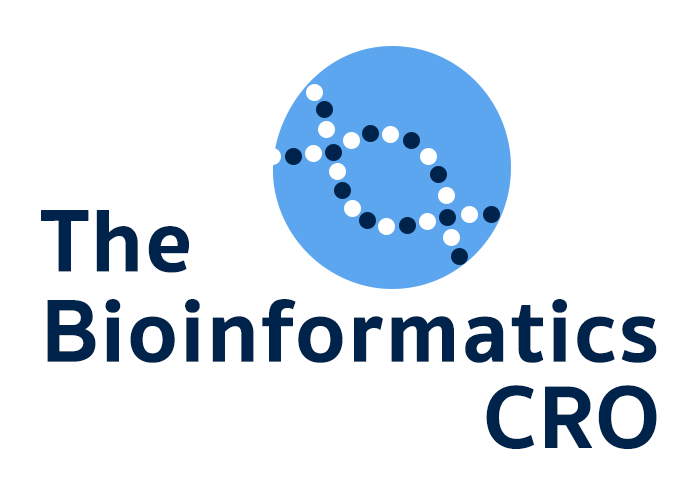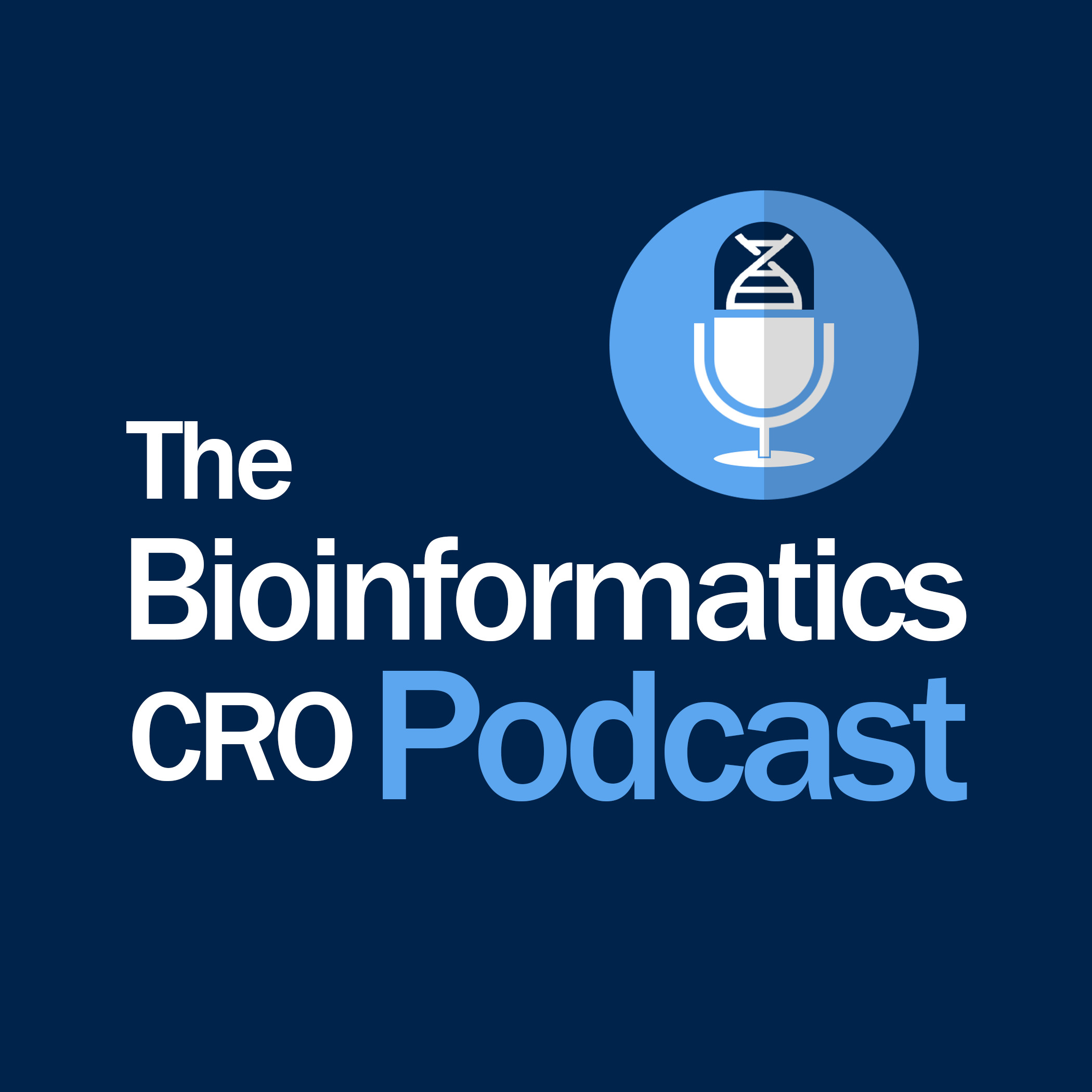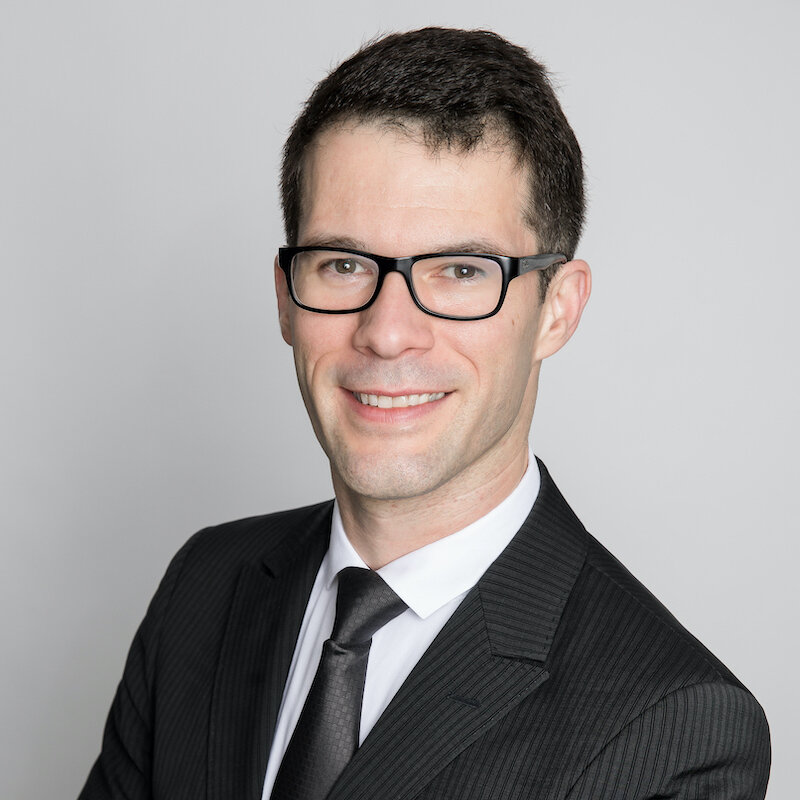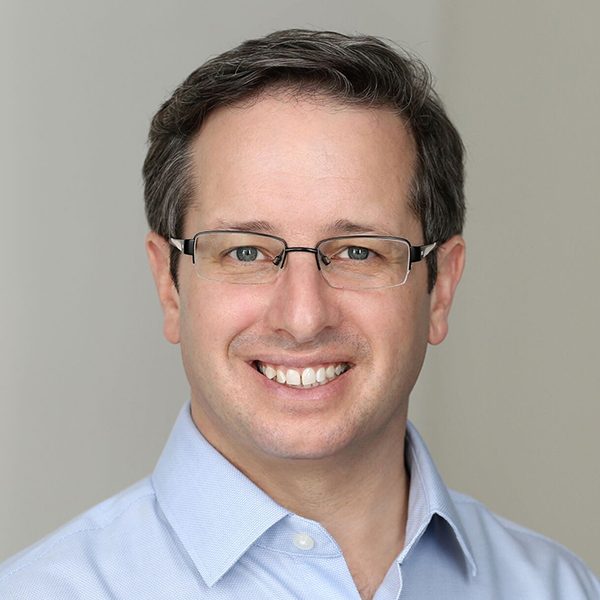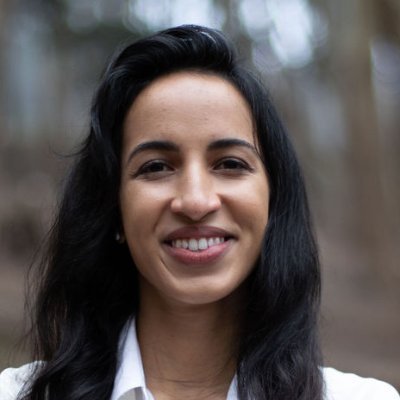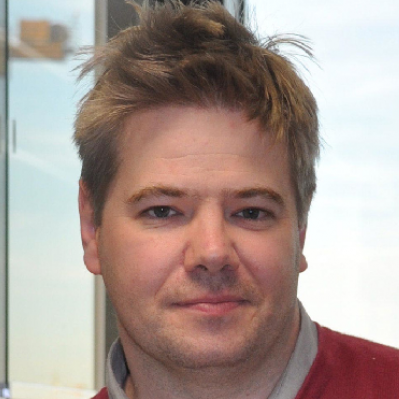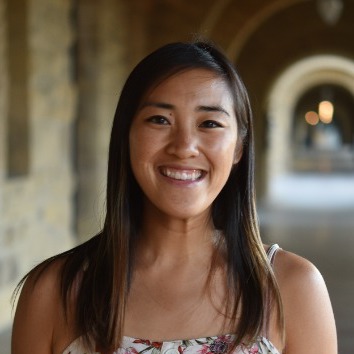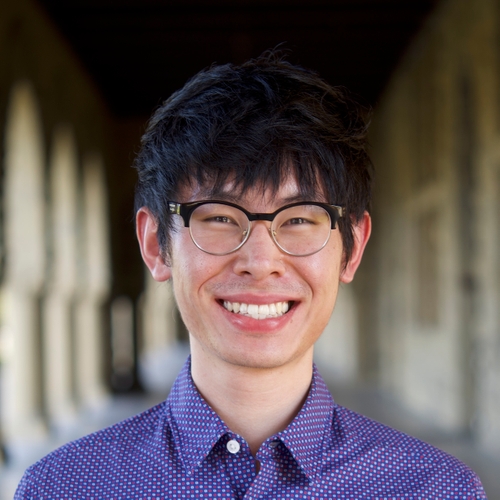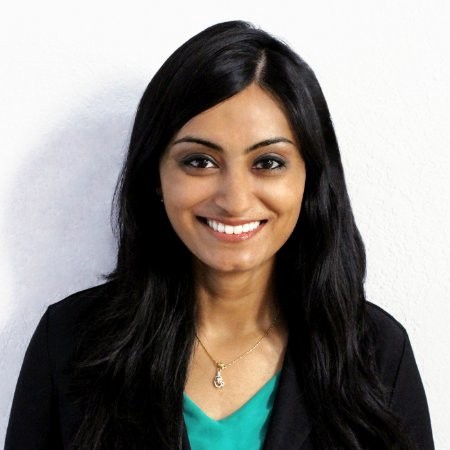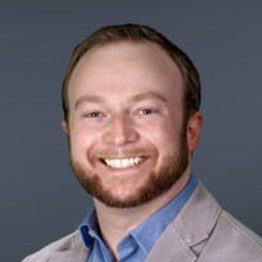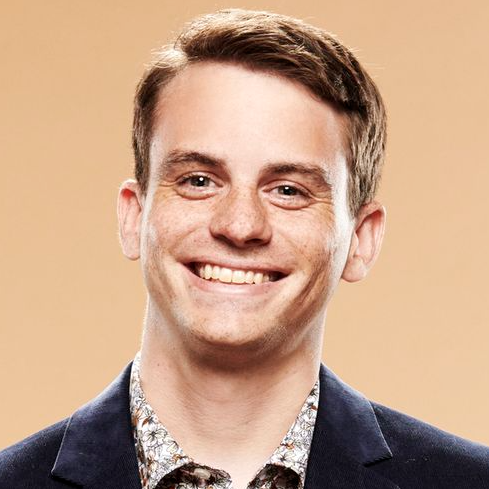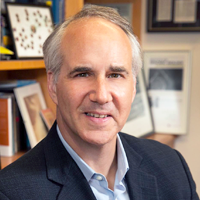The Bioinformatics CRO Podcast
Episode 23 with Adam Robertson
Adam Robertson, CSO of Hemispherian, talks about developing cancer therapeutics in an Oslo-based startup.
On The Bioinformatics CRO Podcast, we sit down with scientists to discuss interesting topics across biomedical research and to explore what made them who they are today.
You can listen onSpotify, Apple Podcasts, Google Podcasts, Amazon, and Pandora.
Adam is Chief Scientific Officer, at Hemispherian, where his team is working to develop broad-spectrum anti-cancer therapeutics. After receiving his PhD from UNC Chapel Hill, he moved to Norway and established his own lab at Oslo University Hospital.
Transcript of Episode 23: Adam Robertson
Disclaimer: Transcripts may contain errors.
Grant Belgard: [00:00:00] Welcome to the Bioinformatics CRO Podcast. I’m Grant Belgard and joining me today is Adam Robertson. Adam is the Chief Scientific Officer at Hemispherian in Oslo. Adam, can you tell us about what you’re doing at Hemispherian?
Adam Robertson: [00:00:12] So right now, Hemispherian is advancing pharmaceuticals for the treatment of a rare, but extremely aggressive brain tumor glioblastoma multiforme. This work is based on about ten years of research and my academic laboratory, and we’re making great progress. We’re about, I would say, about a year away from actually getting into the first patient.
Grant Belgard: [00:00:31] That’s great. What was the impetus for Hemispherian?
Adam Robertson: [00:00:34] So Hemispherian actually has an interesting story. I was not actually a founder of Hemispherian, and my colleague Zeno and one of his friends, his name is Pierre was initial founders of Hemispherian. And they are software engineers and they ran a software company. It initially started as a consulting company. My friend also named Pierre, he joined up and wanted to do bioinformatics and they just wanted to streamline some of the bioinformatics pipeline there that we found or that he found was particularly challenging and understanding how bioinformatics was the way the data was transferred, not so much about the way it was in the analyzed and I ended up just hearing about Hemispherian from my friend at the university, Pierre. And so I ended up just going to a meeting and thought this would be really fun to try something as a private company. Then eventually it turned out that our bioinformatics thing didn’t really work out very well. It worked. It just didn’t make any money.
Grant Belgard: [00:01:27] I think that’s often the case with bioinformatics tools and I had no idea. Hemispherian started as a bioinformatics company. That’s fascinating.
Adam Robertson: [00:01:33] Yeah, it was. And Zeno, he’s an excellent software engineer and Pierre also an excellent software engineer. They made the platform genome stream, but it just didn’t make enough money to justify its existence. So then when I joined up, we were doing this cancer drug. One of my PhD students was also involved with that and at the same time as that was the genome stream wasn’t making a lot of money, we ended up getting the rights to these cancer drugs from the Technology Transfer Office.
Grant Belgard: [00:02:03] Pivot.
Adam Robertson: [00:02:03] Yeah, it was kind of a pivot I guess. At the time, we were looking for a way to make money and then this came out of nowhere really. We weren’t expecting to be able to get the rights to it. It turned out that because of the way the law is written here, we got free from the university. So that worked out really well. That’s how my history with Hemispherian. So I wasn’t there at the beginning, but I joined up about three years ago. And that’s how we ended up doing cancer instead of bioinformatics.
Grant Belgard: [00:02:34] Very interesting. What have been the major things that you’ve learned in moving from academia to the biotech startup world?
Adam Robertson: [00:02:42] Well, so I think the main thing that I learned really quickly is that things happen a lot more quickly, but you don’t end up having the same flexibility. So you don’t have this tendency to get sidetracked on interesting things. You get the one thing or two things that you’re trying to get done and you do them until they are done. And if something interesting happens to come up where you maybe make a note about that and maybe you come back, but most of the time you just try to get to the goal, which from my experience is very different than academia. And I can’t say that for their purposes, one is better than the other. In academia, you get sidetracked and it’s fun and you find out a new thing and you want to publish that and industry, you get sidetracked and then you don’t get to make any money and something doesn’t get done and somebody’s unhappy. That’s never a good spot.
Grant Belgard: [00:03:35] You don’t sound Norwegian. You did your education in the US. Can you tell us about your own path?
Adam Robertson: [00:03:41] Yeah, I did actually all my schooling in the US. I went to undergraduate at Virginia Tech and PhD at University of North Carolina at Chapel Hill. After I finished my PhD, I came to Norway to do a postdoc with Arne Klungland. I met him at a conference, I want to say in Denver, and he offered me a postdoc out there. And so that was I did end up visiting Oslo one time and I really loved it. It was covered in snow in the winter. It was beautiful. So eventually went out there and that’s how I got started out in Oslo. I ended up staying for a variety of reasons. I think mainly I ended up getting married and had kids, which once you do that, it’s harder to be mobile. I think the first maybe three months were the toughest, but then after that I had reasonably good connections out here and things started to pick up.
Grant Belgard: [00:04:35] What were the biggest cultural differences you encountered?
Adam Robertson: [00:04:39] So with the culture out here, it’s nice. I mean everybody obviously speaks Norwegian, but then it’s also nice out here because everybody speaks perfect English. But you can’t jump into a conversation because everybody is speaking Norwegian. If you’re at a bar or something, everybody’s speaking Norwegian. You can’t just kind of say, Oh, that was a great whatever just happened. You can’t understand any of that or at least in the beginning, I couldn’t understand any of that. That was hard to just fit in. Now of course once you did make it known that you were speaking English, they immediately switched to English and they all, don’t really mind it. Sometimes they really like to speak English a little bit. Maybe this isn’t really a cultural difference, but geographical difference is that it’s very dark in the winter here, which personally I found that miserable. But I guess you get used to it over a few years. But the first one here, that was really intense. It’s surprising how strange that feels when you just don’t see the sun for most of the day.
Grant Belgard: [00:05:38] Did you get one of those sun lamps?
Adam Robertson: [00:05:41] No, I didn’t. I never had one of those. But they do have them here. I never ended up. Maybe I should have done that.
Grant Belgard: [00:05:46] Yeah. Cool. And so after your postdoc, you were a group leader at Oslo University Hospital, right. Can you tell us about your experience there?
Adam Robertson: [00:05:54] I ended up having a really diverse lab, had PhDs, postdocs from pretty much everywhere, and that was really great. So many different cultures, languages and experiences. I really had a good time with all of them. We published a lot of papers and found some really interesting stuff, so I had to think that every single one of the people there contributed definitely had a great time. And at the end there, this was really the most interesting part, Terezia. She was an excellent PhD student and she’s also now part of the Hemispherian team. She ended up kind of discovering these molecules, the molecules that were advancing in Hemispherian. And I still remember the day she proposed the experiment to me. And I still remember saying, I don’t think that’s going to work and even recommended not to do it because I felt so strongly that it wasn’t going to work. And so yeah but she did it anyway. And it turns out she was right and I was wrong.
Grant Belgard: [00:06:48] It’s funny how that happens.
Adam Robertson: [00:06:50] Yeah. I mean, it’s really amazing because if it was just me, I said, Yep, that’s never going to work. I would never try that. And I had really good reasons for it. But she did it anyway because she thought it was going to work and it did work.
Grant Belgard: [00:07:04] Well, it’s like the discovery of buckyballs at Rice was famously because Rick Smalley’s lab was moving from one location to another, and the postdoc took his machine apart perfectly and put it back together perfectly. And the grad student forgot a filter. And that allowed the creation of this new molecule and kicked off what eventually led to the Nobel Prize and the launching of this field of carbon nanotechnology.
Adam Robertson: [00:07:30] I actually was not familiar with that story. That’s really quite amazing. I have to go look that one up and I think that’s pretty common.
Grant Belgard: [00:07:38] Serendipity is huge. Yeah.
Adam Robertson: [00:07:40] Yeah. Just jumps out and then we’re a different way of looking at it.
Grant Belgard: [00:07:44] So I see you’re doing work on non-canonical bases, DNA modifications, rather.
Adam Robertson: [00:07:49] Yes. Well, that’s what my academic career was. We still do stuff like that in Hemispherian, but that’s much less exploratory. It’s much more focused on how these drugs end up working.
Grant Belgard: [00:08:02] Cool. And can you tell us about what you did in your academic work?
Adam Robertson: [00:08:06] So my academic career, we ended up there’s a DNA based modification that’s an oxidized form of methylcytosine largely attributed to affecting transcriptional regulation. There was no reason to believe that transcription was having these effects, although it could. So we ended up taking a different direction with a lot of that stuff. So we were looking at reasons that this base was doing something that was unrelated to transcription and we ended up finding a few things. Terezia found I think the most interesting one, which is that the base is involved in replication licensing. It’s a barrier to replication licensing so that the cell replicates its DNA one time and only one time. So it’s one of three other factors that she was able to identify, and that’s also the basis for how she found these drugs is that if you were to inhibit the pathway, enhance that pathway, then that should be and it actually is very cytotoxic to cancer cells, but not normal cells.
Grant Belgard: [00:09:05] So what do you think were your key influences that brought you to where you are now?
Adam Robertson: [00:09:12] Yeah. So there’s a lot of things that ended up contributing to that. And I think the most impactful really thinking about this a lot my grandfather on my father’s side when I was, I don’t know, 10 or 12, he bought me a microscope for I think it was for Christmas, maybe it was for my birthday. I actually can’t remember and I didn’t see him very much. I maybe saw him five times in my life, but that’s one of the times when he did got something for me and I was fascinated by that to be able to see what was what was going on, very small things. I spent a lot of time looking at almost everything you could find for years and don’t know if that’s the reason I decided to do biology, but it certainly played into it. So I ended up going to Virginia Tech to study biology, partially because of that influence. When I went to Virginia Tech, I met my advisor there, George Simmons. He was very good at encouraging you and to say I ended up doing research pretty much because of his suggestions, did research in a few laboratories there. So that was George Simmons was definitely a huge influence there.
Adam Robertson: [00:10:18] And then later, a colleague at the National Institutes of Health very encouraging took me in as a summer intern. He was a neurosurgeon, so I ended up doing some research in neurosurgery, which was really cool. It’s fascinating. It’s like another world in there. So kept me going. And also in the research field, it took two years off to do some work at the National Institutes of Health with the same gentleman, John Heiss, and then joined up as Steve Madison’s lab. He was the chairman at the time and he ended up being the dean. But it was nice to be in his lab because his lab was always very small, so he had a lot of attention. And you had pretty much freedom to do what you wanted. But he was also very clear that you have to do it properly. Everything was done properly. So that was really helpful. Coming out here in Oslo, had a good mentorship with Arne Klungland.
He actually helped me start my laboratory here eventually. And of course colleagues Terezia and Zeno and obviously my wife was very, very supportive. Yeah, a lot of influences. But like I said, I’ve been doing this for a long, long time now.
Grant Belgard: [00:11:24] What advice would you have for people going into the biotech startup world for the first time? What are some common mistakes you see?
Adam Robertson: [00:11:35] It’s difficult for me to say there because actually sometimes I think somebody’s making a mistake, but it turns out they were right. So actually if I were to give advice in biotech, I would probably be wrong. So I think you kind of have to do what you think is right and obviously take as much advice as you can. But if you think it’s right, just go ahead and do that thing, because there’s tons of people including me who might say that doesn’t make any sense, but then it works out and it works out way better than you could possibly have imagined.
Grant Belgard: [00:12:07] I think that’s a level of insight most people don’t have. What do you think we don’t do well in biomedical research? Where do you see things consistently breaking down or avoidable mistakes being made?
Adam Robertson: [00:12:22] In the research field, I find a lot of agreement in this. And actually, it was really hard to say stuff like this when you’re outside of the research field. But now that I’m more industrial thing, it’s a little easier to talk about stuff like this. The pressure to publish I think is pretty devastating to most research just because it prevents you from doing stuff properly. People take shortcuts just to get publications out there. And so it’s all good intention because you expect that these results will be this way, but you still cut the corner and then maybe you find something really interesting. It’s also you don’t really have the opportunity to follow up the way you’d like to follow up. Because you end up you just get the paper, just get the paper, just get the paper because your grant is dependent on that and your PhD or your postdoc, any success is dependent on that. So if you don’t get the paper, then you’ve got a big problem. So it’s just I think that the whole pressure to publish really prevents, not always prevents good science, but definitely it could be a lot easier I think or to do good science without that pressure. And of course then it brings up the most logical thing is what would you put in its place and I don’t have a great answer there. I actually have struggled with that a little bit and you know you can look at and say, yeah, that’s a problem, but what do you how do you fix that problem? So it’s you still need to communicate and professionally communicate. And publications so far are the best for that. So kind of the problem is also this, it’s a solution to a different problem.
Grant Belgard: [00:13:52] Yeah. It seems to me sometimes that there’s too much pressure put on the name of the journal, right. When the variance in citations is within a journal is vast. I don’t know. To me, it seems a little anachronistic, right? Like everything’s online anyway. We already gather all these metrics of citations on the actual papers themselves, and now we have solid preprint servers. I mean, not to say there’s no value add from journals and so on, but it seems if a paper is getting a lot of attention and you can basically get post-publication peer review for a manuscript posted on a preprint server or something that might be a little better than the three reviewers who are randomly drawn by the Journal.
Adam Robertson: [00:14:36] Yeah, I think that I actually would like to see that. But then what I imagine pops up is rather than valuing the paper for its scientific merits and say, learn something from this or this is valuable to my research. What I imagine would happen is a ranking or metrics for that paper for something like reads or shares or something like that. And that then becomes the shared of times it’s shared or the number of times somebody comments on it is then the metric. And so then you would write your paper so that whatever that metric ends up being.
Grant Belgard: [00:15:04] Gets gamed.
Adam Robertson: [00:15:05] Yeah, right. That’s what I think happens with publications is that people game it for say, to publish a higher impact factor journals rather than for the purpose of communicating science.
Grant Belgard: [00:15:17] And what do you think is the elephant in the room in biotech?
Adam Robertson: [00:15:22] That’s a little bit more difficult for me to answer because I’m in biotech. Of course, money is the driving factor for biotech so of course that’s maybe not a bad driver. In our field for instance, we’re looking at cancer drugs and it’s pretty clear that it’s very hard to get a drug to market as expensive and that if you don’t have the right indication, it’s a very small indication and you just don’t get enough money to get the drug forward. There are ways to get around that stuff, but if it really have a good financial backing to be able to get this to market. And if your market is very small, those indications just aren’t, it’s very difficult to find a way to get a drug or something to treat them.
Grant Belgard: [00:16:05] So I’m familiar with the funding landscape in the US and the UK, and I know nothing about how that typically works for Norwegian biotechs. Are your investors largely Anglo American or are they Scandinavian? Or how does that work?
Adam Robertson: [00:16:21] Right now we have investment mostly from Norwegian family office. We also have investment from UK and some US. The financing, I don’t think it’s easier or harder here. I just think it’s hard trying to find money and I think we’ve been pretty lucky and right now our investors are excellent. They’re tuned in, at least the investors that want to be. They are tuned in and they want to help. They pretty much do everything they can to help. They try to understand what we’re doing. We talk to them a lot. I guess they’re also looking after their investment, but they really do want to help the company get our drugs to market. And that will end up helping these patients with glioblastoma. So for me the investment here, it was definitely hard to get. But once we did, I’m very, very happy with the investors that we do have.
Grant Belgard: [00:17:13] How has COVID affected you at Hemispherian?
Adam Robertson: [00:17:17] It has had too much of a negative effect on us actually, because we have laboratory work. Most people end up being on home office. We have laboratory work which really can’t do at home. So we end up still having to go to work almost every day. As far as investment goes, it was harder initially because as soon as that happened, people just said, We’re going to reevaluate. We will come back to you. And then they just never did. Or that just they kicked it or kicked it down the road for a year and said, come back to us next year when this thing is over. So I think ongoing investment efforts at the time were challenging, but doing the work that we’re trying to do, it really hasn’t had any significant effect. The investment was really the issue for us.
Grant Belgard: [00:18:02] And have you seen that bounce back? Because I’ve heard that from a lot of people that in the early days, there was a lot of fear of contagion and of large economic consequences and that since then a lot of VCs have adapted and are making investments in companies where they never have an in-person face to face meeting with the principals.
Adam Robertson: [00:18:24] It is starting to come back to my recollection of what it was in say January or February of last year. I think that its way back. We’re not actively looking for money right now. So I mean, we’re just I’m just updating the people who we talk to normal or in the past. So at the moment, not looking for money. It’s hard to say exactly how challenging it is. But it does seem that people are or investors are out there and ready to go again. So that’s I think you know things are starting to come back.
Grant Belgard: [00:18:52] What’s the biotech ecosystem like in Oslo?
Adam Robertson: [00:18:56] So it’s small, but Oslo is I mean, it’s the biggest city in Norway by population. But it’s still a pretty small city by most European standards. So the biotech, you would expect is also pretty small. I work at an incubator here. It’s called Share Lab, and it’s quite remarkable. It’s pretty state of the art facility out here where pretty much anything you want to do, you can do it here or if you can’t do it, you just talk to the the gentleman running it and they will get it for you. It just make it happen. And there’s also another incubator down the road, the Oslo cancer cluster. That’s also a nice location. So it’s just we ended up being here and the ecosystem we started, we were the first company here, maybe the second company here, and now there’s I think 20 companies in the share lab. So it’s definitely growing. If it continues this way, it will be very similar to some of the bigger places, although at a smaller scale. I think that it’s definitely on the up and it’s very interesting time to be here for sure.
Grant Belgard: [00:19:54] And for companies in the region in terms of their collaborations and partnerships and so on, does there tend to be any kind of geographic preference there? Are they often working with companies in France and Germany and Switzerland, or is it more of the UK or the US?
Adam Robertson: [00:20:11] Most of our collaborations are in the US now. We do have some local collaborations at the university here in Oslo and in Trondheim, which is just a little bit north and to the west of us. But most of the stuff we do is either with very local close by or in the US, some of the other companies thinking Switzerland is kind of a go to place in Germany. I know there’s a lot of collaborations there, but pretty much everywhere in the European Union is can think of places where absolutely there’s somebody collaborating with somebody but can’t say that any are overrepresented. And of course it’s a lot easier to mention our collaborators because they know exactly who they are and where they are.
Grant Belgard: [00:20:54] If you were to go back to 18 year old Adam, what would you tell him?
Adam Robertson: [00:21:01] Maybe be a banker. No, it definitely is rewarding sometimes, but I can see that it’s a lot more work than some other professions. If this is what you really enjoy. Yeah, I would recommend doing it.
Grant Belgard: [00:21:20] Right. I guess that’s always the difficult thing about science. You can you can work for literally years on something and you finally get the definitive results back and it just, nature doesn’t agree with you. And because it’s not engineering, you can’t force it to be the way you want. You just have to have to move on.
Adam Robertson: [00:21:40] Yeah. And
I guess there are some new genetic engineering and some of these synthetic biology things where you actually can get in there and do that.
Grant Belgard: [00:21:49] Have a synthetic biology pivot, make it work the way you need it to work.
Adam Robertson: [00:21:54] If only everything was that simple. Just get in there and do whatever you wanted to do.
Grant Belgard: [00:21:59] So what would be success for Hemispherian?
Adam Robertson: [00:22:02] We kind of have different metrics in that case. So when we started, what we wanted to do was to be able to advance the drugs that we have to the completion of the phase two. And then we imagined at that point that this would be of interest to the pharmaceutical companies and they would just buy the company and that would be our exit. Since then, we’ve been learning a lot about this space and pharmaceutical development. It turns out that it’s very possible that we could take it much further along if we wanted to. It’s difficult to say once you have options like that where you could sell the company or not. But it turns out that it’s possible that because of the indication, it’s relatively small. After you do this for a while, you can get to know many of the people in the field and maybe most of the doctors doing the trials. You could take it further potentially into the phase three and potentially even being able to market your own drugs so that would also be success. Personally, I think that would be the most fun way to do it. I don’t know if that’s the way we will do it, but it’s interestingly. It has sort of come up as an option.
Grant Belgard: [00:23:03] Well at the very least, it’s good to have as a best alternative to negotiate agreement, right?
Adam Robertson: [00:23:08] Yeah. And it would be very hard I think if we get it past a phase two and then we have success and then we get a bunch of offers and say, No, we’re going to keep that going. We do want to help these patients out. But at the same time, we also have to keep in mind that we do have investors and we also personally have invested a lot. So we would like to get some return on that. And also the pharmaceutical companies, they’re pretty able to take a phase three trial. They’ve done it hundreds, perhaps thousands of times. They know what they’re doing for us. It would just be for fun. And because it’s something we’d like to do, but perhaps maybe even in the interest of everyone, we just sell it anyway. So it really depends. We’re think we’re at least 4 or 5 years from that. So we have some time to think for sure.
Grant Belgard: [00:23:52] If I can ask a classic Peter Thiel question, what’s one thing that you believe is true that most people would not agree with?
Adam Robertson: [00:24:02] Yeah, I don’t have a great answer to that one. I’m trying to think. What do I believe is true? Because I think that most people have the beliefs and then they also believe what was true. And then there’s the reality of the situation. For instance, do something because you like it. But then there’s the other competing force, which is gotta also eat, right? You got to make money. So most people like me have to keep that in mind that. If you do what you really want to do for a living, you may not end up being able to pay the bills. So you have to do what you want to do and still figure out a way to pay the bills. So maybe it’s a little less fun in one area, but you still get paid to do it. I don’t know if that’s really the answer to your question, but it’s what I would say is do what you want to do, but then you gotta figure out a way to make it reasonable and realistic.
Grant Belgard: [00:24:53] Yeah, that’s pretty good. I mean balance is important. It’s interesting. I reflect back to high school. I went to a school that had a pretty good music and arts program. We had some phenomenally talented musicians and I looked a lot of them up a couple of years ago. And they’re all very smart people, too. And pretty much all of them went to conservatory. They were playing in professional orchestras and teaching music students and things. And then they ended up migrating their day job to software development. And now they still play in community orchestras and things like this, but it’s more their hobby than their paid work.
Adam Robertson: [00:25:34] Yeah, I think that’s some degree unfortunate that they can’t do what they want. I mean, if that’s what they wanted to do for a living and then they simply just isn’t enough payment. And I think that’s unfortunate.
Grant Belgard: [00:25:45] I mean I think it’s a bit of a winners take all kind of world unless you’re Yo-Yo Ma or something. If you’re the 30th best cellist in the world, you’re still an amazing cellist. But you’re still going to be having to probably teach kids cello lessons and things to make ends meet.
Adam Robertson: [00:26:07] Yeah, I guess you’re right. It’s kind of a winner take all in that case. I still think that’s pretty elite if you’re in the top 30 and then you still can’t make a living.
Grant Belgard: [00:26:16] Yeah. So post Hemispherian, when Hemispherian has succeeded beyond everyone’s wildest dreams, what do you think you’ll do next?
Adam Robertson: [00:26:24] So admittedly, I haven’t not given that tons of thought, but I think that once Hemispherian does have an exit, I think I would like to do another company. I really had a lot of fun, and I think it would be a very different experience this time because I know what to expect and I know who to talk to when I need something or when something needs to happen. So I don’t need to do all that extra work of trying to figure out what the question is. Now, I know you know what to do exactly at this stage, but I think that will make it a lot easier and maybe make it a lot more fun is that there’s a lot of roadblocks we had and mostly because we didn’t know what we were doing and now we at least gotten past those.
Grant Belgard: [00:27:05] It’s interesting talking with first time founders of biotech companies. Pretty much as always the answer is start another company. But this time I have a better idea of what I’m doing so we can skip over a lot of the pain.
Adam Robertson: [00:27:17] Yeah. I’d be curious to know what other companies, because I do know a lot of other folks that have started companies and they’ve come out the other side and they ended up. I think frequently I see that they end up being investment analysis or starting their own investment firms. And I think that would be interesting. I don’t know if I’d like to do that and didn’t ever say that I thought that I would be doing a biotech, but I think that would be interesting to look at other companies and to see people who were my situation. Well, it will have to see I think for sure.
Grant Belgard: [00:27:49] Time will tell. Great. Well, thank you so much for joining us today, Adam. It was great.
Adam Robertson: [00:27:55] Yeah, thanks a lot for having me. It’s a really interesting and of course really great to keen on keeping up the collaboration. So yeah, thanks for having me on it.
